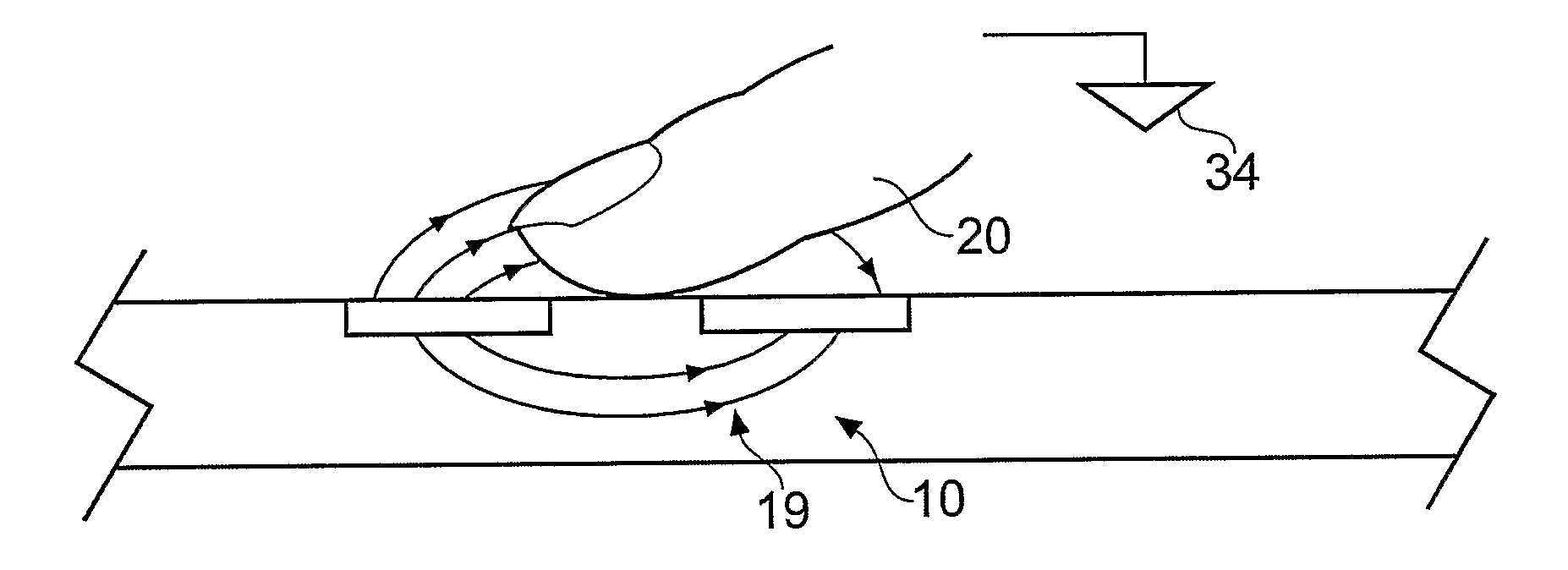Sensor and method of sensing
a sensor and sensing technology, applied in the field of sensing sensors, can solve the problems of increasing the cost of additional components, affecting the accuracy of capacitance measurements, so as to reduce the effect of noise signals
- Summary
- Abstract
- Description
- Claims
- Application Information
AI Technical Summary
Benefits of technology
Problems solved by technology
Method used
Image
Examples
Embodiment Construction
[0038]As explained above there are various forms of touch sensors which can determine the presence of a body proximate a sensing element of the touch sensor as a result of a change of charge transferred from a key of the touch sensor. The following description with reference to FIGS. 1 to 4 provides a background explanation of the operation of touch sensors according to a first example and FIGS. 13 and 14 provide other example touch sensors with which embodiments of the present invention find application.
[0039]An example of such a touch sensor is shown in FIG. 1a and 1b. The example shown in FIGS. 1a and 1b correspond to an example in which a pair of transverse electrodes form a touch sensor. As shown in FIG. 1a a pair of electrodes 100, 104 which form a drive or X plate and a receiving or Y plate in the following description are disposed beneath the surface of a touch sensitive control panel 15. As shown in FIG. 1a and 1b the touch sensor 10 is arranged to detect the presence of a ...
PUM
 Login to View More
Login to View More Abstract
Description
Claims
Application Information
 Login to View More
Login to View More - R&D
- Intellectual Property
- Life Sciences
- Materials
- Tech Scout
- Unparalleled Data Quality
- Higher Quality Content
- 60% Fewer Hallucinations
Browse by: Latest US Patents, China's latest patents, Technical Efficacy Thesaurus, Application Domain, Technology Topic, Popular Technical Reports.
© 2025 PatSnap. All rights reserved.Legal|Privacy policy|Modern Slavery Act Transparency Statement|Sitemap|About US| Contact US: help@patsnap.com



